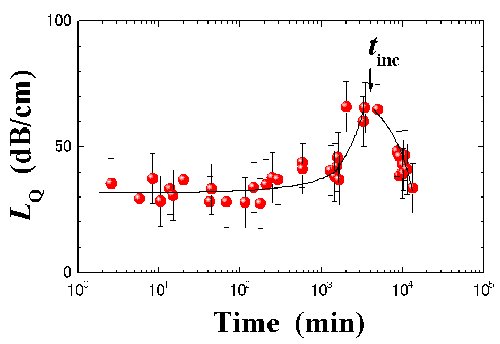|
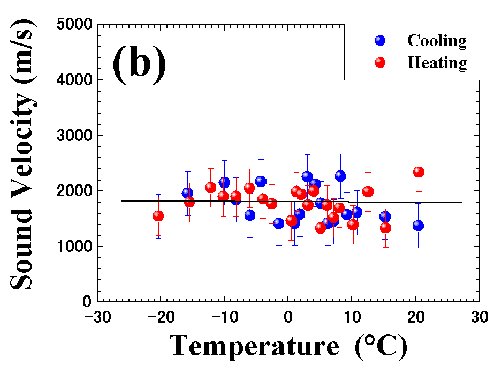 |
Fig. 1 |
|
|
Fig. 2 Time development of longitudinal absorption in the quenched benzene, LQ, at 0 °C. LQ has the maximum value at the peculiar time, tinc. |
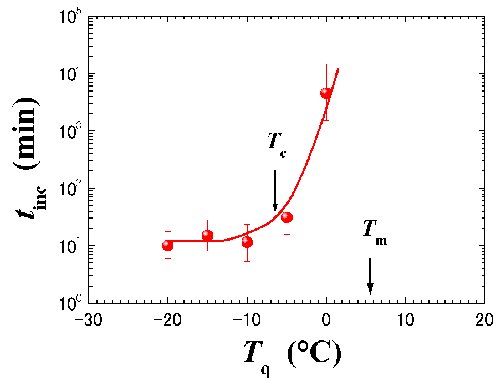 |
Fig. 3. Incubation time, tinc, as a function of quenching temperature. The waiting time is determined by the maximum values of longitudinal absorption (Fig. 2). tinc diverges close to Tm. The solid line shows the calculated incubation time regarded as the thermal activated process. |
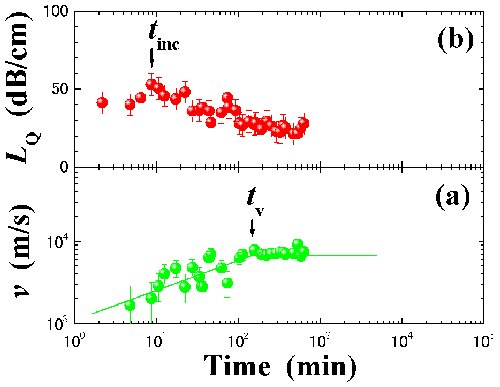 |
Fig. 4. Time dependence of (a) longitudinal wave velocity, v, and (b) longitudinal absorption, LQ, at -20 °C on quenching process. |
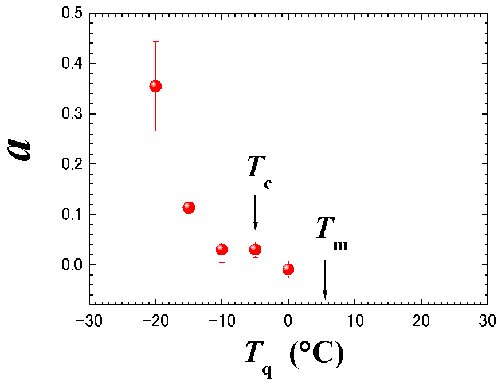 |
Fig. 5. The exponent, a, of time at the early stage in longitudinal wave velocity on quenching temperature, Tq. |
References
[2] M. Misawa, T. Fukunaga, J. Chem. Phys. 93 (1990) 3495.
[3] H.B. Burgi, S.C. Capelli, A.E. Goeta, J.A.K. Howard, M.A. Spackman, D.S. Yufit, Chem. Euro. J. 8 (2002) 3512.
[4] W.I.F. David, R.M. Ibberson, G.A. Jeffrey, J.R. Ruble, Physica. B. 180-181 (1992) 597.
[5] K. Ishii, H. Nakayama, T. Yoshida, H. Usui, K. Koyama, Bull. Chem. Soc. Jpn. 69 (1996) 2831.
[6] K. Ishii, H. Nakayama, M Kawahara, K. Koyama, K. Ando, J. Yokoyama, Chem. Phys. 199 (1995) 245.
[7] K. Ishii, H. Nakayama, Y. Yagasaki, K. Ando, M. Kawahara, Chem. Phys. Lett. 222 (1994) 117.
[8] K.T. Gillen, J.E. Griffiths, Chem. Phys. Lett. 17 (1972) 359.
[9] J. Dubochet, M. Adrian, T. Teixeira, C.M. Alba, R.K. Kadiyala, D.R. MacFarlane, C.A. Angell, J. Phys. Chem. 88 (1984) 6727.
[10] M. Ricciyz, S. Wiebel, P. Bartoliniy, A. Taschink, R. Torrek, Philos. Mag. 84 (2004) 1491.
[11] H. Abe, I. Hori, T. Yatomi, M. Kikuchi, H. Matsumoto, H. Yoshizaki, Jpn. J. Appl. Phys. 42 (2003) 3552.
[12] L.E. Kinsler, A.R. Frey, A.B. Coppens, J.V. Sanders, Fundamentals of Acoustics, 4th Ed. Wiley, New York, 2000.
[13] T.F. Sun, J.A. Schouten, N.J. Trappeniers, S.N. Biswas, J. Chem. Thermo. 20 (1988) 1089.
[14] B.A. Oakley, G. Barber, T. Worden, Darrin Hanna, J. Phys. Chem. Ref. Data 32 (2003) 1501.
[15] H. Abe, M. Ishibashi, K. Ohshima, T. Suzuki, W. Wuttig, K. Kakurai, Phys. Rev. B 50 (1994) 9020.
[16] H. Abe, K. Ohshima, J. Phys. Soc. Jpn. 67 (1998) 2952.
[17] M.L. Cowan, I.P. Jones, J.H. Page, D.A. Weitz, Phys. Rev. E 65 (2002) 066605.
Last Modified: April 1, 2011
